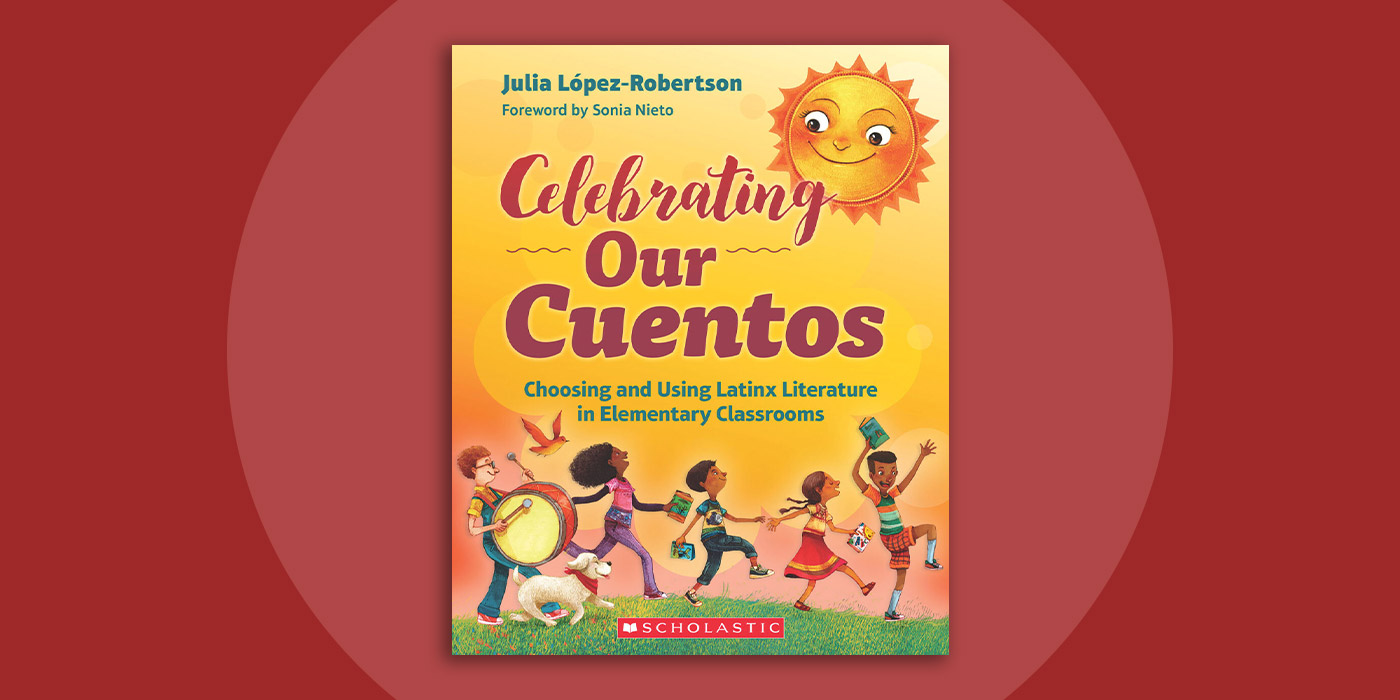In the many years I have worked with linguistically, culturally, and socioeconomically diverse children, I have learned that sharing high-quality children’s literature is important, but it is not enough.
Engaging in discussions about teaching, learning, and curriculum, and carrying out action-research projects, led me to examine what I was teaching and what materials I was using.
It did not take long for me to realize that my Latinx students’ culture, language, and life experiences were completely missing from the school-provided curriculum, which fueled my interest in using Latinx children’s literature to enhance it.
In my book, Celebrating Our Cuentos: Choosing and Using Latinx Literature in Elementary Classrooms, I provide teachers, administrators, preservice educators, and anyone working with children and families with a resource that builds understanding of what Latinx literature is, why it is important, and how to use it as a teaching partner. Most of all, my book provides esperanza (hope) to the multitude of Latinx children in our classrooms and to the teachers who are helping them to be successful and grow as confident, capable, multilingual readers and writers.
When considering Latinx children’s literature, make sure it accurately and sensitively represents the culture to avoid propagating stereotypes and a singular narrative about Latinx people. After all, one story can’t tell the whole story of any culture because culture is ever-changing and dynamic.
Be very suspicious of any book that claims to tell the story of a particular culture, because every culture has many stories. Themes and topics may recur within and among stories, but there is no one story.
Here are six points to consider to when selecting Latinx literature for your classroom.
1. Representation of culture: There are many Latinx cultures and types of Latinx people. Does the book depict just one?
2. Use of Spanish language:
- Does the author respect Spanish language?
- Does the book contain fake or mock Spanish, such as words ending in the letter o to suggest Spanish?
- Does the book contain consistent and correct use of written and conversational Spanish?
- Does Spanish dialogue flow naturally, and is it free of errors and cliches?
3. Characters that are multidimensional:
- Are the Latinx characters unnecessarily loud or boisterous?
- Are they working only in stereotypical roles, such as housekeepers, construction workers, or waiters?
- Are any depicted as professionals?
- Are they presented as subservient or passive?
4. Knowledge of English:
- Do the characters know English, or not?
- When a character is learning English, are the people around him or her helpful and kind, or do they mock his or her attempts at the language?
5. Education level of adults:
- Have the adult characters been formally schooled?
- Are they portrayed as simpleminded or ignorant?
6. Storyline:
- Are books with Latinx characters only about immigration?
- Are the characters fleeing something? Are they running away? Being chased?
Latinx children’s literature is a powerful tool to help both Latinx and non-Latinx students succeed in learning and life. It also helps to build community in the classroom and the school. When students are exposed to multicultural literature, they are less likely to find themselves feeling invisible and, instead, find themselves feeling important and celebrated. When you use literature that transcends biases and stereotypes, all students develop a sense of respect and understanding for one another.
To learn more about enhancing your curriculum with Latinx literature, you can purchase my book below.
